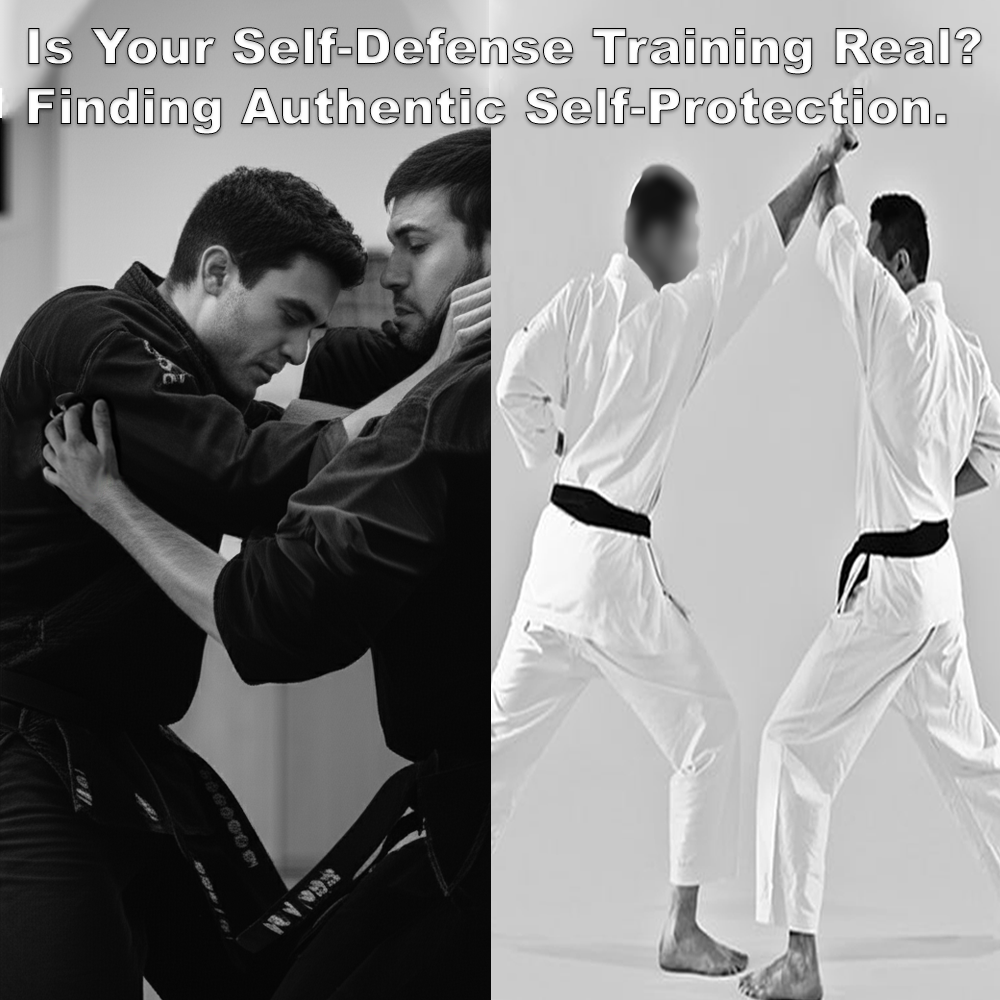
(Approx 2 minute 45 second read)
Someone asked me, “How do you spot real, effective training – from the kind that’s not? How can you know the difference, especially if you’re training hard?”
.
You see it everywhere these days, a dojo on every street corner and in every strip mall, many of them have the word “self-defense” plastered on their windows.
.
But do they really teach self-defense – or is it just a buzzword to get people through the door?
.
Most of what I’ve seen suggests the latter. The majority seem to offer modern karate, and sport-based training, with little connection to practical application.
.
I’ve got no issue with people doing what they enjoy. But I do have a problem with people claiming they’re teaching self-defense, when clearly they’re not.
.
For someone new to all this, it’s hard to tell the difference. A new student may walk into a brightly lit dojo, see people training hard, wearing uniforms, yelling with spirit – and assume that what they’re doing must be real.
.
But hard training and sweat aren’t indicators of practicality. You can train with intensity and still be learning things that wouldn’t hold up in the real world.
.
So what do you do if you’re someone who genuinely wants to learn how to protect yourself?
.
Visit a few dojo. Compare what they offer. In a more pragmatic dojo, students will be working on simple, functional movements from day one – deliberately taught with purpose. Not long-range, choreographed attacks or step-sparring routines that bear little resemblance to real encounters.
.
You should see them working at close range – learning how to deal with grabs, shoves, and wild swings. Not just stepping backwards, across the room, block after block.
.
Drills should be realistic but controlled. Training should emphasize timing and distance that reflect the true closeness of an encounter. Even early on, students should be learning how to think, how to adapt, and how to respond when things go wrong – not just how to repeat.
.
It’s not about perfect stances measured to the half-inch or keeping your hikite hand tight to your spleen (see recent article). It’s about preparing for reality.
.
Pressure testing doesn’t mean chaos. But it does mean creating scenarios that are unpredictable. Students need to feel what it’s like when a technique doesn’t work – when they’re off balance or under pressure. That’s when learning begins.
.
And if there are children in the dojo – what are they actually learning? Too often, it’s just step-drills, loud kiai, and choreography. But if we claim to teach self-defense, even children need more than play.
.
You don’t teach them to fight – you teach them to be aware of their surroundings, to recognize danger, to speak up, and to run to safety if needed. You give them simple tools and help them understand what real violence is – not in a frightening way, but in a truthful one.
.
A child who believes they’re safe because they’ve blocked a stepping punch with a jōdan age-uke is being misled. That’s not self-protection – it’s performance.
.
You can still teach children how to deal with grabs, shoves, and wild swings. Include some light kata-based sparring and competitive-style escape and evasion. Keep it age-appropriate – but keep it real.
.
If they’re going to wear a karate-gi, give them something real behind it.
.
And what about the instructor? Do they give you answers – or encourage you to explore? Do they explain the why behind the movement – or just tell you to copy it? A good teacher should be open, not defensive. They should help you build understanding, not just skill.
.
Does the instructor welcome questions, or avoid them? Is it all about fighting – or do they also teach verbal de-escalation? Do they explain escape – or just say, “run away”?
.
These things matter. Because when it really counts, it won’t be polished technique that saves you, but clear understanding, and training grounded in the right context.
.
Written by Adam Carter
